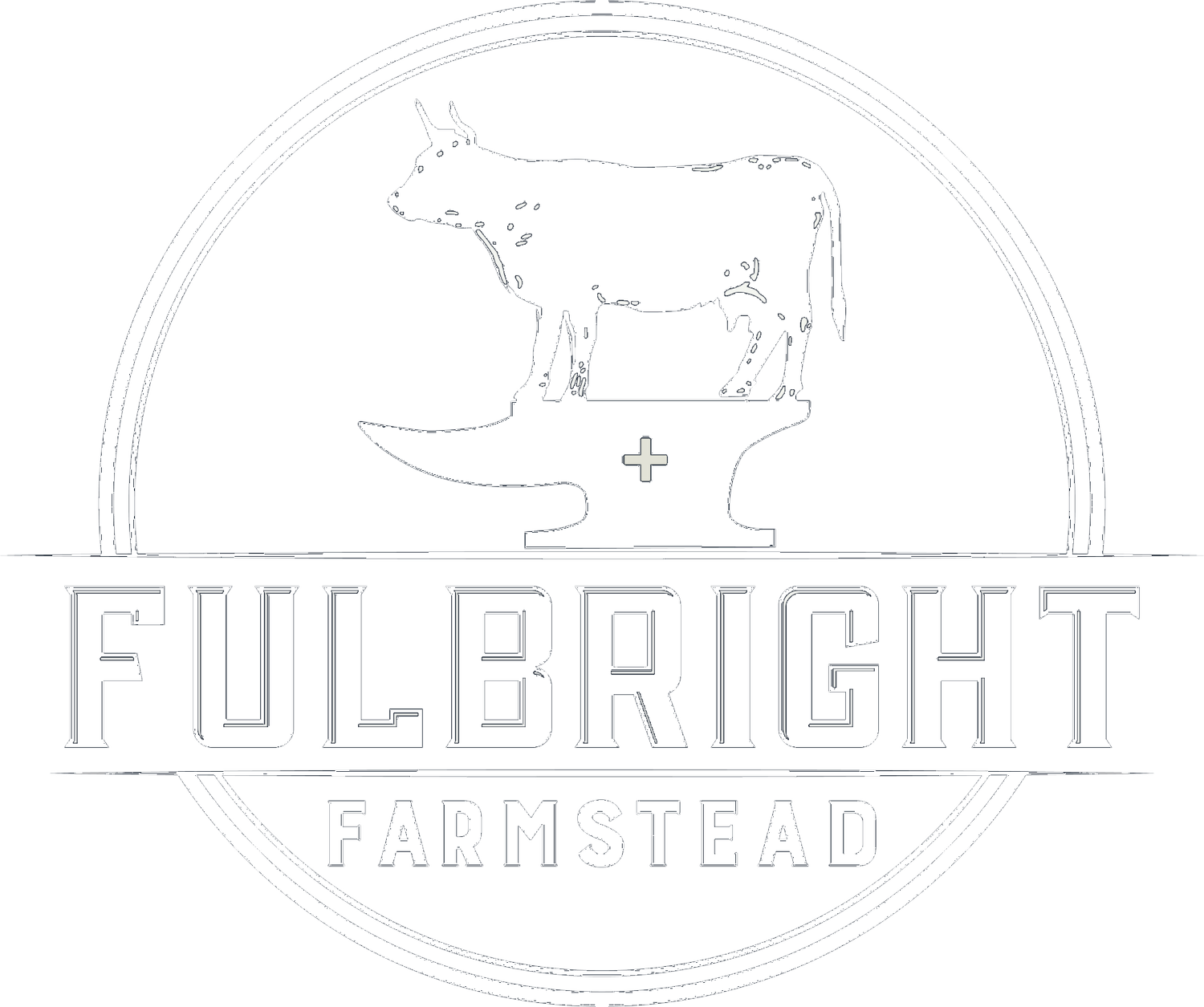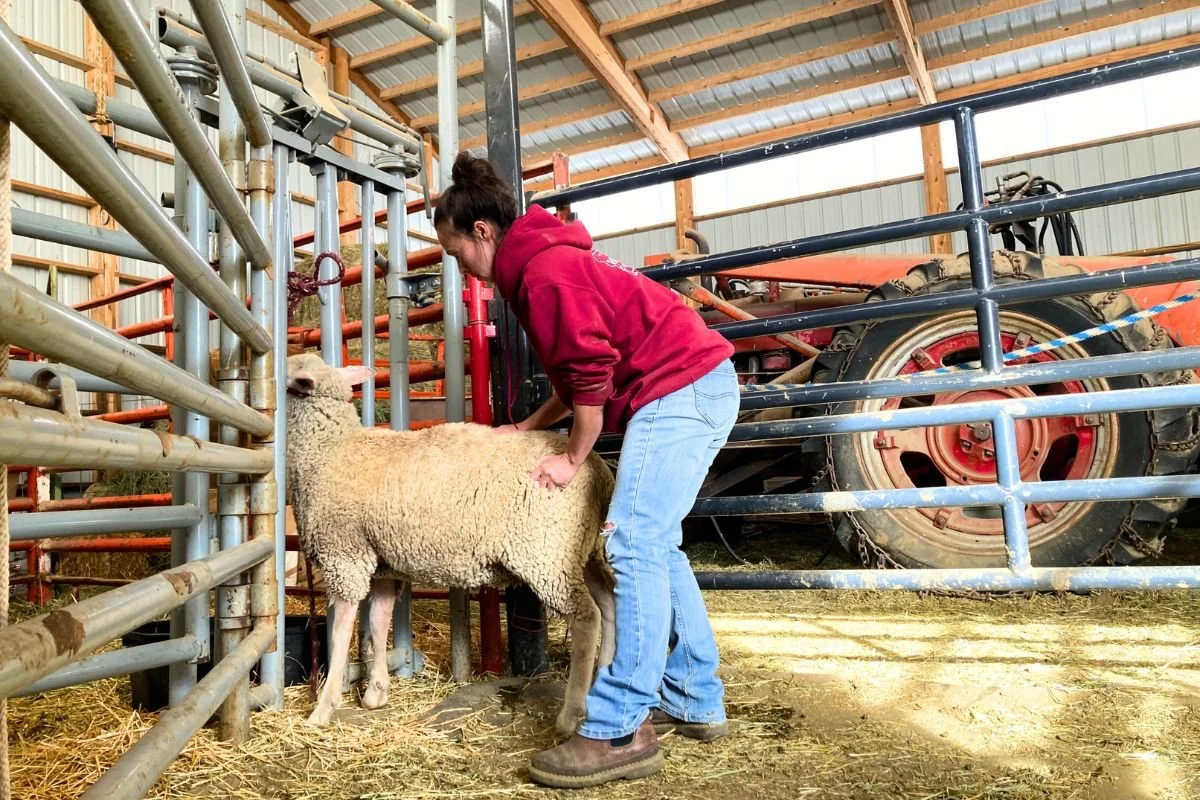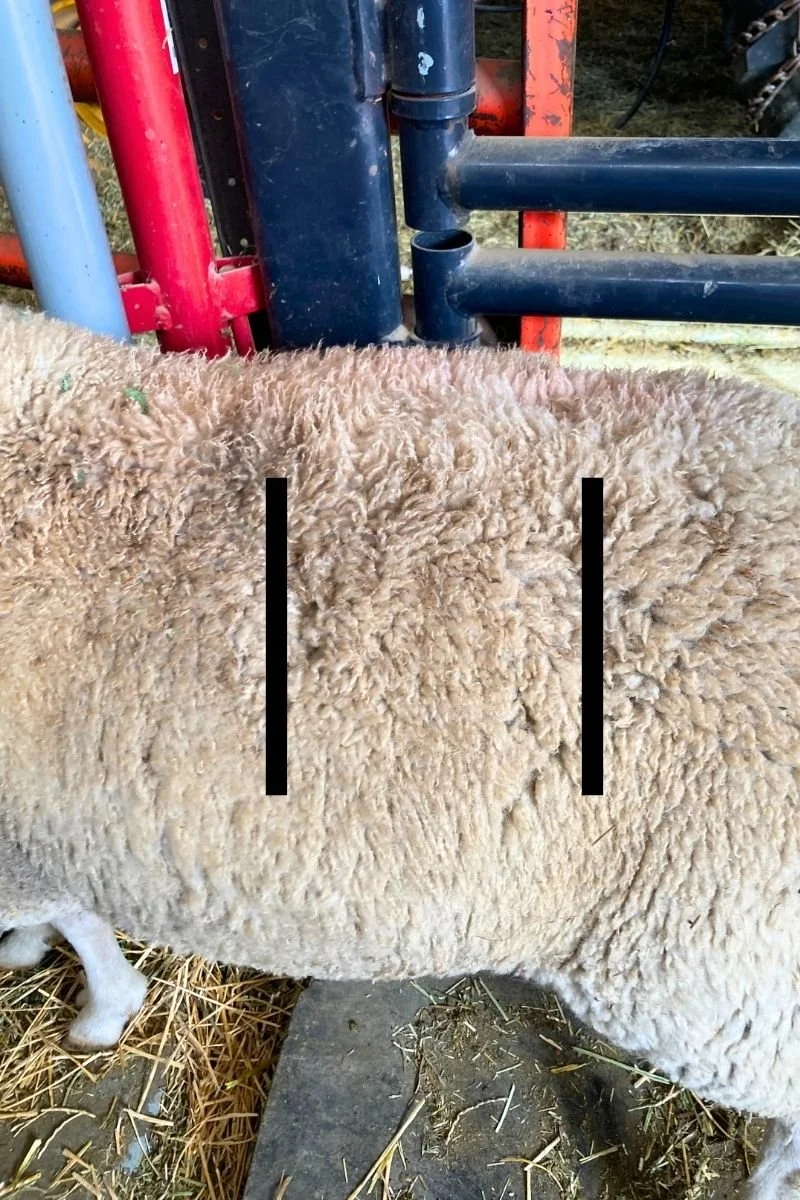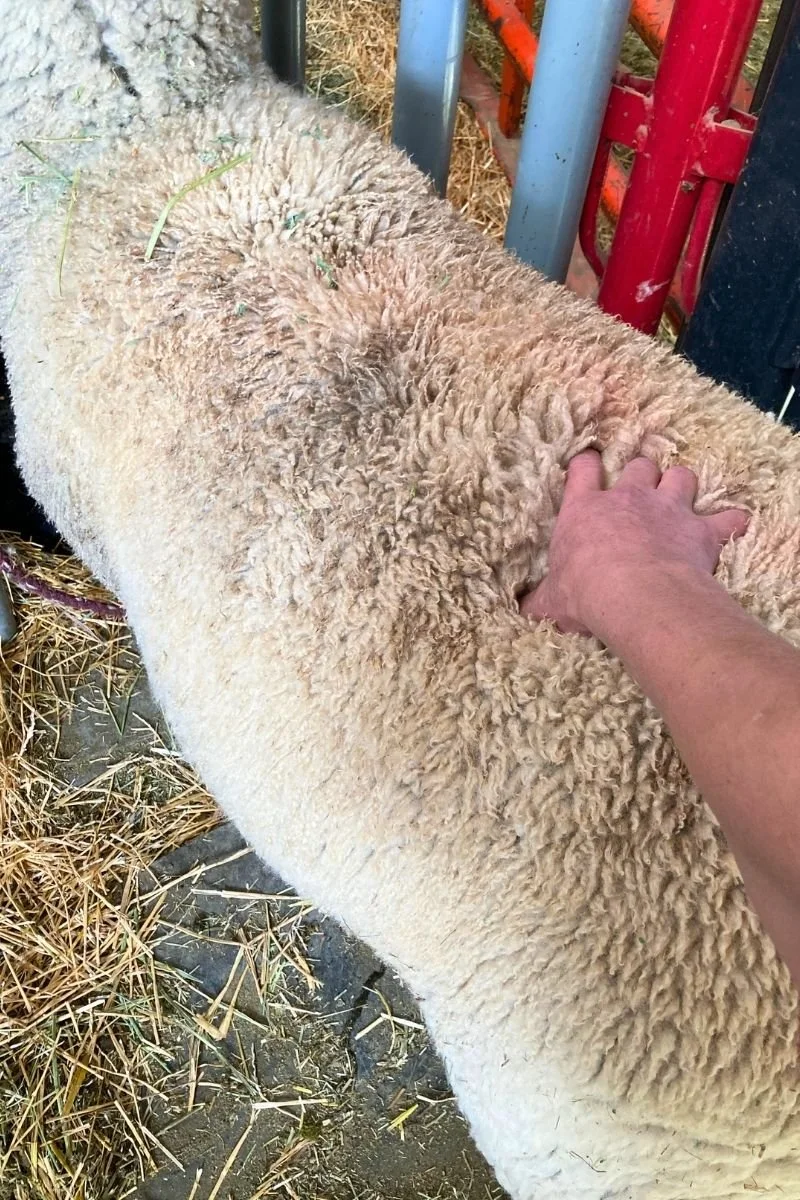Body Condition Scoring Sheep
Body condition scoring is one of the most important skills you can master as a shepherd, especially as breeding season approaches. In this post, you'll learn exactly how to assess your sheep's body condition, why it matters so much for reproductive success, and what target scores you should aim for before turning out your rams this fall.
I'll be honest—my first season with sheep I thought I could judge my ewes' condition just by looking at them. Then I had them shorn and had a rude awakening. That thick wool was hiding the truth. Once I started actually putting my hands on my sheep and learning proper body condition scoring, everything changed. Now it's a non-negotiable part of my routine, and I'm going to show you exactly how to do it.
Understanding Body Condition Scoring in Sheep
Body condition scoring (BCS) is a hands-on method of evaluating the amount of fat and muscle covering a sheep's backbone and loin area. Unlike weighing your sheep, which can be influenced by fleece weight, how much they just ate, and their frame size, BCS gives you the real story about their nutritional status and energy reserves.
The scoring system uses a scale of 1 to 5, where 1 is emaciated and 5 is obese. For most management purposes, you want your sheep at a 3 to 3.5—and this is especially critical going into breeding season.
Why You Can't Trust Your Eyes
Wool is incredibly deceiving. I've seen sheep that looked plump and healthy turn out to be a BCS 2 under all that fleece. This is why body condition scoring requires your hands, not your vision. You need to feel what's happening under that wool.
The BCS Scale Explained
**Score 1 - Emaciated:** The backbone and ribs are sharp and prominent. There's no fat cover and minimal muscle. This sheep is in crisis.
**Score 2 - Thin:** The backbone is still prominent but smoother. You can feel the transverse processes (the side bones) easily with light pressure. Minimal fat cover.
**Score 3 - Average/Good:** This is your target for most of the year. The backbone is smooth and rounded, requiring firm pressure to feel individual bones. The transverse processes are well-covered and also require firm pressure to feel.
**Score 4 - Fat:** Individual backbone bones can barely be detected with firm pressure. The transverse processes cannot be felt. There's thick fat cover.
**Score 5 - Obese:** You cannot feel the backbone even with firm pressure. The sheep has extensive fat deposits in the brisket and tail head. This is just as problematic as being too thin.
How to Body Condition Score Your Sheep
Here's the step-by-step process I use on my flock:
**Step 1:** Position yourself beside or behind the sheep. I find it easiest to do this when sheep are in a small pen or caught in a corner.
**Step 2:** Focus on the lumbar region—this is the area immediately behind the last rib and in front of the hip bones. This is your sweet spot for scoring.
**Step 3:** Place your fingers flat on the backbone (the spinous processes) in this lumbar area. These are the bony projections you can feel running along the top of the spine.
**Step 4:** Apply firm, steady pressure straight down. How easily can you feel each individual bone? How prominent are they?
**Step 5:** Move your fingers outward from the spine to feel the transverse processes—these are the horizontal bones that stick out from the sides of the spine. Press down and feel for how much muscle and fat cover these bones.
With practice, this entire process takes 30-60 seconds per animal.
What You're Feeling For
The key is understanding what different levels of cover feel like under your hands:
At a **BCS 2**, the backbone feels like individual, distinct bones that are smooth but prominent. The transverse processes feel like smooth, rounded edges that you can easily define with light finger pressure.
At a **BCS 3** (your target), the backbone still has individual bones you can feel, but they're smooth and rounded and require firm pressure to distinguish. The transverse processes are well-covered—you need to press firmly to feel them, and they feel well-rounded, not sharp.
At a **BCS 4**, you're really pressing hard to feel individual backbone bones, and the transverse processes have disappeared under the fat cover. You can't distinguish them at all.
Why Body Condition Score Matters for Breeding Season
Here's where this all becomes critical for your flock's success. The body condition of your ewes and rams at breeding directly impacts what happens next spring at lambing.
The Magic Number: 3 to 3.5
Your goal going into breeding season should be ewes and rams at a BCS of 3 to 3.5. Here's why it matters so much:
What Happens When Ewes Are Too Thin at Breeding
When ewes go into breeding season below a BCS 3, several problems cascade:
**Poor cycling and conception rates:** Thin ewes may not cycle regularly or may not cycle at all. Their bodies are in survival mode, not reproduction mode.
**Lower ovulation rates:** Ewes in poor condition ovulate fewer eggs, which means fewer twins and triplets.
**Smaller placentas:** This is the big one that many shepherds don't realize. The placenta develops most rapidly in early pregnancy. If a ewe conceives in poor body condition, she will develop a smaller placenta—period. And here's the kicker: you cannot fix this later with better feed.
Milk production is based upon the number and size of the placenta(s). Ewes that start thin don’t grow as large of a placenta and typically produce less milk for a shorter period, even if you feed them well during lactation. The foundation for good milk production is laid during pregnancy, and it starts with body condition at breeding.
Read it again for the naysayers in the back!
What Happens When Ewes Are Too Fat at Breeding
On the flip side, overly fat ewes (BCS 4 or higher) have their own set of problems:
**Lambing difficulties:** Internal fat deposits in the pelvic area can obstruct the birth canal, leading to dystocia.
**Pregnancy toxemia risk:** Fat ewes carrying twins or triplets are at much higher risk of twin lamb disease (pregnancy toxemia) in late pregnancy.
**Reduced feed intake:** Fat ewes eat less in late pregnancy precisely when nutrient demands are highest for fetal growth.
Why Ram Body Condition Matters Too
Don't forget about your rams! They need to be at a BCS 3 to 3.5 as well:
**Better libido and stamina:** A ram in proper condition has the energy and drive to breed multiple ewes effectively throughout the breeding season.
**Higher quality semen:** Body condition affects semen quality and quantity.
**Heat tolerance:** Rams do a lot of physical work during breeding. Proper condition (not too fat, not too thin) helps them handle the demands without overheating.
Fat rams may be sluggish breeders and have trouble mounting. Thin rams may lack the stamina for intensive breeding work.
Strategic Feeding Based on Body Condition Scores
Once you've scored your flock, you can make smart feeding decisions instead of just throwing hay at everyone equally.
6-8 Weeks Before Breeding:
Keep in mind it takes about 3 weeks to raise BCS half a point. A good milking ewe will likely be at 2.5 by weaning or end of lactation. This is when you need to score your entire flock and separate them into groups:
**Thin ewes (BCS 2 to 2.5):** These girls need extra nutrition immediately. Increase their feed to help them gain condition. Depending on how thin they are, you may need to provide grain, better quality hay, or access to better pasture.
**Target ewes (BCS 3 to 3.5):** Maintain their current nutrition level. They're right where you want them.
**Fat ewes (BCS 4+):** These ewes need to lose weight slowly. Reduce their nutrition carefully—don't crash diet them, but get them moving in the right direction. This might look like making them walk to feed, or putting them on a lower quality pasture or hay.
Monitor Throughout the Year
Body condition scoring shouldn't be a once-a-year activity. I score my flock at these key times:
At weaning / end of lactation (to plan for recovery and next breeding)
At lambing (to assess how they came through)
Throughout lactation (when their demands are the highest and I might need to make feed adjustments)
Frequently Asked Questions About Body Condition Scoring Sheep
**Can I body condition score a sheep that's pregnant?**
Yes, absolutely. The technique is the same—you're still feeling the lumbar region, not the abdomen. Monitoring body condition during pregnancy helps you adjust feeding to prevent both pregnancy toxemia in fat ewes and undernutrition in thin ewes.
**How long does it take to change a sheep's body condition score?**
Generally, plan on 3 weeks minimum to change a sheep's condition by half a point. This is why scoring 8 weeks before breeding is ideal—it gives you time to make adjustments. Rapid weight changes (gain or loss) are not healthy and should be avoided.
**What if I have just a few sheep in poor condition—should I separate them?**
Yes, if possible - they might be low on the totem pole and get bullied away from the extra feed if in with everyone else. Thin sheep need extra nutrition, while sheep already at target condition don't. Feeding everyone extra feed to help a few thin sheep will just make your good-condition sheep too fat. Group feeding based on body condition is much more efficient and cost-effective. If you can't separate them physically, consider supplementing the thin ones individually with grain while they're locked in a stanchion or small pen.
Related Posts You Might Enjoy:
Pin for Later:






